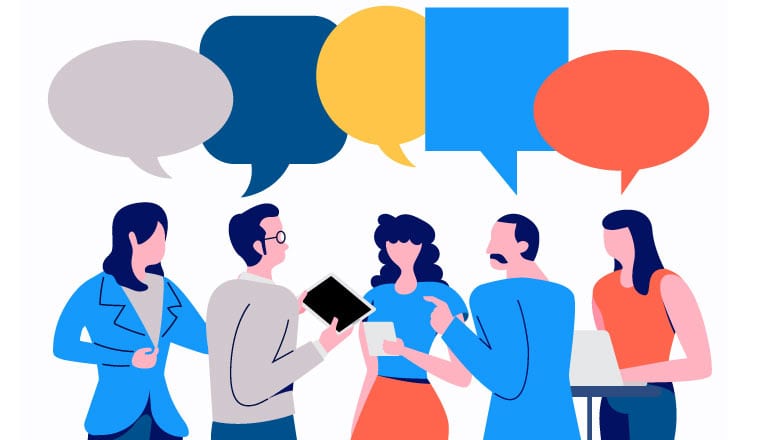We have all had different experiences when attending large group activities. Maybe you have been in a group where you have been comfortable, and everybody is working well together. Then sometime during the activities, you get somebody new to join your group. Suddenly, there isn’t as must engagement with the whole group, as this new person is dominating the conversation and activities. They are the ones that answer all the questions and everybody else is basically shoved into the background.
One of the more irritating behaviors that this type of controlling person does, is to interrupt others while they are speaking, and others cannot have their say at all. Others reaction to this is irritation and eventually a complete lack of interest in further activities. This one person has gained all the focus and left everybody else in the dust. The group dynamics is now completely shattered, for any group leader or facilitator, this is something you would like to prevent. It is good to be enthusiastic and volunteering answers, but when it starts to have a negative effect on others in the group, it’s time to intervene.
 Let’s have a look at a few ways you can identify a controlling person:
Let’s have a look at a few ways you can identify a controlling person:
- The most obvious is, being the first one to answer all the questions
- They will take up a lot of time discussing their ideas, often times even landing up repeating themselves.
- Has difficulty giving somebody else a turn in the group

The main reasons this is unhealthy in a group discussion:
- The entire atmosphere changes and becomes uncomfortable
- It prevents others from contributing
- Since there is a dominant opinion on a subject, this makes the discussion biased and doesn’t take into account the opinions of the group. The whole purpose of a group discussion is to obtain a broader view of a topic and to help the facilitator see if everybody understands the subject.
How do you diplomatically go about handling a controlling or dominant person?

You could handle the situation in different ways, one of them would be to nip it in the bud and prevent it from ever happening in the first place. Start out by laying a foundation on how things are going to work from the beginning. Before you start a discussion on anything gives everybody an opportunity to speak. The person who might want to dominate or control the discussion will then understand the process and let others into the discussion
There is a very good chance that this might not work out. Go a step further by setting limits or a time frame on their answers. Once you begin, everybody has a turn to discuss their views. If a person is going over the time limit, give them a few moments more and raise your hand to interrupt. Since you have already set out the process of discussion, it won’t be rude to say that it is now time for somebody else to share their views. Always acknowledge what they have to say, but you don’t have to give in to their attempts. You, as facilitator now have control of what happens during the discussion.
Using your own body language during a group discussion can be a way to subtly control the discussion. All that the group leader or facilitator has to do, is to use their bodies in a way that directs the conversation. Face directly to the person whose turn it is to share, by standing you can also turn away from the controlling person, taking all of the focus off of them. When it is the next person’s turn to speak, face them directly and so on. Also, by calling out each person’s name when it is their turn could help.
Since the attention is now turned away from the controlling person, they might feel the need to become more visible.
Further methods to regain control of a group discussion:

- The first method is known as ‘the whip around’. This strategy helps to get everybody involved in the discussion without interruptions. A facilitator will ask those participating to give a short answer or opinion to a question, which will be answered in an already established order. For example, from left to right or front to back. This is an orderly method of involving an entire group that helps the facilitator gauge the participants understanding of the subject.
- Another structured discussion can include the method, ‘Think, Paired and share’. This is specifically aimed at larger groups in order to get everybody participating. First, decide on your topic of discussion and lay down the guidelines of what to do. First, the group is asked to think about the topic, then have each group member pair off with somebody and have them share their ideas with each other. Once this is done, the discussion can be broadened to include everybody else in the group. Facilitators should monitor and make sure everybody is following instructions.
After following these methods and the controlling person is still posing a problem, you may have to take them aside privately for a chat. A facilitator should be professional in how the situation is handled. Inform the person that their opinions are valuable and get them involved in helping you to get answers from other participants in the group. Help them to realize they have value to the discussion, but only for themselves but for the entire group.
A more obvious method to gain control of any discussion is to use an object. This object could be a stick, a feather or whatever is light and easy to pass around. Lay guidelines down beforehand that everybody must agree to. Once everybody agrees to start your discussion by handing the object to a person, this person can now speak without anybody else interrupting. This person then hands the object over to the facilitator who gives it to somebody else and so it goes around the group. If a member of the group wants to interrupt, remind them gently about the guidelines and to respect the others in the group. Everybody will get their turn to speak.


